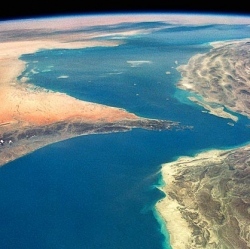
You may have been taught that the Earth is composed of different layers; a rocky crust and mantle, outside of a liquid outer core and a small, solid iron inner core. It turns out, according to new research, that the inner core may itself have a distinct internal structure.
An inner-inner core about half the diameter of the whole inner core. And this could reveal insights about our planet and its history. A team composed of researchers from the University of Illinois at Urbana-Champaign and China’s Nanjing University adapted technology that gauges the strength of an earthquake. Rather than listen in on the seismic wave signals of the initial shock, they measured the waves that resonated in the aftermath of earthquakes around the world between 1992 and 2012.
Seismic waves reverberate through the Earth’s layers during an earthquake, effectively "ringing" like a bell that’s been struck by a hammer. The waves change as they pass through and bounce back off different layers, and these returning signals help scientists to form a picture of the Earth below its surface, like the impression of an unborn baby that you see in an ultrasound.
"The basic idea of the method has been around for a while, and people have used it for other kinds of studies near the surface," explains lead author Xiaodong Song. "But we are looking all the way through the center of the Earth."
What the researchers found took them by surprise. The inner core is far more complex than previously thought, with the seismic wave data indicating the presence of two distinct parts to the inner core, an outer layer of iron crystals aligned north-south and an inner layer pointed roughly east-west.
The iron crystals of the inner-inner core also behave differently to their outer-inner counterparts, which suggests that they could be made of a different type of crystal or of crystal in a different phase of matter.
